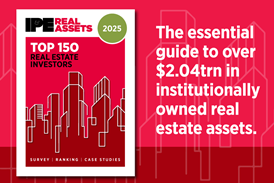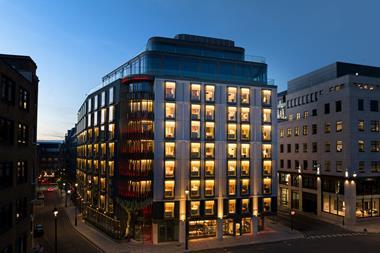The fact that pan-European retail real estate investment volumes in H1 2022 were the highest in three years – a welcome boost to the sector – only tells half the story.

Data from CBRE shows that H1 deals climbed to over €20 bn, some 50% higher than the same time last year, returning retail investment to a market share of around 15%.
Yet this revival is only one part of a picture which has darkened considerably since Russia invaded Ukraine in February. High energy and commodity prices and soaring inflation and interest rates in the light of ongoing supply chain woes are affecting politics, economics and society. Indexed rents are raising costs further for retailers, while consumers take a hit to their wallets. When funds are tight, discretionary spending is often the first to go.
That said, in an increasingly bleak transactional environment for the wider real estate market, retail assets still have their admirers. The price discovery issue blocking many office and logistics deals is arguably less present in the world of retail, notes Chris Gardener, head of pan-European retail at CBRE.
‘There has already been a pricing shift on retail post-Covid,’ he notes. ‘Therefore, we are able to absorb a bit of the pricing dislocation within current markets. Prices won’t have to move far for deals to be done.’
In the landscape of retail, grocery, convenience and retail parks are the most highly traded assets, representing around 40% of the total pie, Gardener says, although shopping centre deals have been creeping up – now representing 25% of deals. On top of that, ‘outlet centres are incredibly attractive’, he notes.
‘I think it’s one of the sectors to monitor closely. Although it makes up a very small proportion of the whole retail market, there is a rarity in the assets that trade, which adds an implied value.’ He adds: ‘Also, in times of economic headwinds, outlets tend to perform resiliently.’
Survival signs
For Gardener, although many retail assets haven’t benefitted from the tourism flows which contributed to their revenues in the past, many have ‘managed to return to pre-pandemic levels of trading on domestic traffic alone. That bodes well if and when tourists return,’ he says.
The global pandemic – the ultimate test for retailers and landlords as many stores were literally closed – has also brought other lessons. ‘Covid proved whether your asset was mission critical or just another centre,’ he says. ‘That has created further polarisation in the sector.’
Many assets which didn’t maintain occupancy levels and leasing tension have weakened and face a difficult time in the next 18 months, but those that have will be in a strong position to negotiate the challenges of increasing overheads and inflation with tenants. Depending on location, however, urban sites are often ripe for repurposing to ‘whatever suits the catchment of a city’.
Meanwhile, grocery assets, which traded well during the pandemic as they were seen as star performers, are a little more vulnerable to macroeconomic headwinds now. ‘They are still attractive, but the fluctuations in the debt markets are potentially a problem as margins are now tight. The market is repricing them, but nevertheless, assets with long leases still offer stable income in challenging consumer times.’
Operational trends
Beyond merely surviving, there is still a bright future for a class of ‘star performers’ in the retail arena, suggests Eric Decouvelaere, EMEA head of retail operator division at CBRE Investment Management. Part of Decouvelaere’s job is persuading investors whose funds they manage that retail is still an interesting and rewarding investment.
He says: ‘We have invested a lot in client relationship management to be closer to our tenants. `The second part of our strategy lies in customer intelligence, compiling both hard and soft data. For us that means consulting focus groups to find out what the customer really wants.
‘What really makes a winning asset? I won’t say it’s retail parks, or outlets, or any subsector in particular. It varies so much on an asset-by-asset basis. Ultimately, a successful asset combines a great location with absolute relevance and the operational capabilities to boot. It’s about building a sustainable retail destination, which requires a lot of work.’
He adds: ‘These operational and service-side skills are absolutely key for retail’s next phase.
In the past, retail was supply driven. Now it’s demand driven and that means really speaking to and responding to consumer needs. Meanwhile, I don’t see online as competition any more – it’s just another distribution channel. I’m convinced we can also play to its advantages.’
At the end of the day, says Decouvelaere, ‘retail faces many of the same challenges as the rest of real estate,’ he notes. ‘That is, the challenge to understand occupier needs better, and be much more long term in approach in terms of both occupiers and investment cycles.
‘Retail is still exciting. We are a little ahead of the other asset classes because the sector has already suffered so much in the last three years. Our job now is to re-educate investors with solid, hard data. Sales are above pre-Covid levels, occupancy is good in the best assets, and the decline in footfall is reversing. We’re not quite at 2019 levels, but in its own way, this is a much healthier and more realistic market.’










